-
 Bitcoin
Bitcoin $84,768.0672
1.88% -
 Ethereum
Ethereum $1,909.2422
3.87% -
 Tether USDt
Tether USDt $0.9999
0.01% -
 XRP
XRP $2.1248
0.79% -
 BNB
BNB $607.8422
0.13% -
 Solana
Solana $125.8082
0.55% -
 USDC
USDC $1.0001
0.01% -
 Dogecoin
Dogecoin $0.1714
3.02% -
 Cardano
Cardano $0.6790
2.88% -
 TRON
TRON $0.2366
-1.18% -
 Toncoin
Toncoin $4.0033
-1.89% -
 Chainlink
Chainlink $14.1341
3.95% -
 UNUS SED LEO
UNUS SED LEO $9.3610
2.49% -
 Stellar
Stellar $0.2742
3.09% -
 Avalanche
Avalanche $19.3999
3.09% -
 Sui
Sui $2.4250
6.33% -
 Shiba Inu
Shiba Inu $0.0...01268
1.76% -
 Hedera
Hedera $0.1702
3.60% -
 Polkadot
Polkadot $4.1591
2.51% -
 Litecoin
Litecoin $84.7473
1.77% -
 MANTRA
MANTRA $6.2648
0.51% -
 Bitcoin Cash
Bitcoin Cash $309.3726
1.77% -
 Bitget Token
Bitget Token $4.6037
2.60% -
 Dai
Dai $1.0000
-0.01% -
 Ethena USDe
Ethena USDe $0.9998
-0.02% -
 Pi
Pi $0.7069
-2.93% -
 Hyperliquid
Hyperliquid $13.1551
-1.38% -
 Monero
Monero $216.8930
0.96% -
 Uniswap
Uniswap $6.2361
4.26% -
 Aptos
Aptos $5.3722
1.43%
How to calculate the APY mentioned by DeFi projects?
APY in DeFi reflects yearly returns with compounding; higher frequency boosts APY over APR. Verify displayed APY using the formula to ensure accuracy.
Mar 31, 2025 at 12:07 am
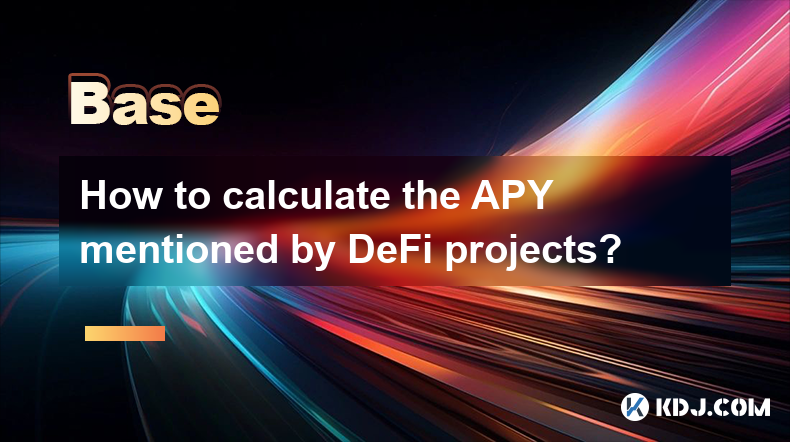
Understanding APY in DeFi
Annual Percentage Yield (APY) is a crucial metric in DeFi, representing the yearly return on investment, considering the effects of compounding. Unlike the simple Annual Percentage Rate (APR), APY accounts for the reinvestment of earnings throughout the year. This leads to significantly higher returns, especially with high-frequency compounding. Understanding how APY is calculated is essential for making informed decisions in the volatile DeFi landscape. Many DeFi projects display APY prominently, but knowing how to verify this number is crucial.
Decomposing the APY Calculation
The calculation of APY isn't always straightforwardly presented by DeFi platforms. The formula itself is relatively simple, but the underlying factors can be complex. The core formula involves the interest rate and the compounding frequency. The more frequently interest compounds, the higher the APY will be compared to the APR. This is because earned interest generates further interest.
The Formula: Unveiling the Math Behind APY
The formula for calculating APY from APR is:
APY = (1 + (APR / n)) ^ n - 1
Where:
- APR is the annual percentage rate.
- n is the number of compounding periods per year.
For example, if a project offers a 10% APR compounded daily (n=365), the APY would be:
APY = (1 + (0.1 / 365))^365 - 1 ≈ 0.10516 or 10.52%
This demonstrates that the APY (10.52%) is higher than the APR (10%) due to the daily compounding.
Factors Influencing APY in DeFi
Several factors influence the APY offered by DeFi projects. These include:
Underlying Asset Volatility: The value of the underlying asset can significantly impact your actual returns. If the value of the asset drops, your APY might not reflect the initial projection.
Protocol Fees: Many DeFi protocols charge transaction fees, reducing your overall returns. These fees should be considered when evaluating the actual APY you receive.
Impermanent Loss: For liquidity pools, impermanent loss is a risk. This occurs when the price of the assets in the pool changes significantly relative to each other, resulting in lower returns than simply holding the assets.
Compounding Frequency: As shown above, the frequency of compounding directly impacts the APY. Daily compounding generally yields a higher APY than monthly or annual compounding.
Project Popularity and Demand: High demand for a particular DeFi project can increase its APY, while low demand may decrease it. This is because the rewards are often distributed based on the total value locked (TVL) in the protocol.
Step-by-Step Calculation with an Example
Let's walk through a step-by-step calculation:
- Step 1: Identify the APR. Let's assume an APR of 5%.
- Step 2: Determine the compounding frequency. Let's assume it's compounded monthly (n=12).
- Step 3: Apply the formula: APY = (1 + (0.05 / 12))^12 - 1
- Step 4: Calculate the result: APY ≈ 0.05116 or 5.12%
Therefore, a 5% APR compounded monthly results in an APY of approximately 5.12%.
Verifying Claimed APY
It's crucial to independently verify the APY claimed by DeFi projects. Don't solely rely on the displayed number. Check the project's documentation for the APR and compounding frequency, and then perform the calculation yourself using the formula. Compare your calculated APY with the one presented by the platform. Discrepancies might indicate inaccuracies or hidden fees.
Understanding APR vs. APY
It's essential to differentiate between APR and APY. APR is the simple annual interest rate without considering compounding. APY, however, takes compounding into account, providing a more accurate representation of your yearly returns. Always look for the APY figure to understand the true potential returns. Ignoring the difference can lead to inaccurate investment estimations.
Risks Associated with High APY
While high APY is tempting, it often comes with increased risk. High-yield DeFi projects often carry higher risk due to factors such as smart contract vulnerabilities, rug pulls, or market volatility. Thoroughly research the project before investing. Never invest more than you can afford to lose.
Frequently Asked Questions
Q: What is the difference between APR and APY?
A: APR is the annual percentage rate, while APY is the annual percentage yield. APY accounts for compounding, resulting in a higher value than APR.
Q: How does compounding frequency affect APY?
A: Higher compounding frequency (e.g., daily vs. annually) leads to a higher APY because interest earned is reinvested more frequently.
Q: Can I trust the APY displayed by DeFi platforms?
A: It's crucial to verify the APY independently using the formula and the APR and compounding frequency provided by the platform.
Q: What are some risks associated with high-APY DeFi projects?
A: High-APY projects often carry higher risks, such as smart contract vulnerabilities, rug pulls, and market volatility.
Q: How do I calculate APY if the compounding frequency is not specified?
A: You cannot accurately calculate APY without knowing the compounding frequency. Contact the project for clarification.
Q: What factors besides APR and compounding frequency affect APY?
A: Other factors include protocol fees, impermanent loss (for liquidity pools), and the volatility of the underlying asset.
Q: Is a higher APY always better?
A: Not necessarily. Higher APY often comes with higher risk. Consider the risk profile before investing.
Q: Where can I find the APR and compounding frequency for a DeFi project?
A: This information should be clearly stated in the project's documentation, often found on their website or in their whitepaper.
Q: What should I do if the calculated APY differs from the displayed APY?
A: Investigate the discrepancy. There might be hidden fees or inaccuracies in the displayed APY. Exercise caution.
Q: Is there a tool to automatically calculate APY?
A: While there isn't a universally accepted single tool, many DeFi calculators and spreadsheets exist online that can perform this calculation based on the inputted APR and compounding frequency. Always verify the source's reliability.
Disclaimer:info@kdj.com
The information provided is not trading advice. kdj.com does not assume any responsibility for any investments made based on the information provided in this article. Cryptocurrencies are highly volatile and it is highly recommended that you invest with caution after thorough research!
If you believe that the content used on this website infringes your copyright, please contact us immediately (info@kdj.com) and we will delete it promptly.
- Bitcoin (BTC) Consolidates as On-Chain Indicators Suggest Potential Bullish Move
- 2025-04-02 02:25:12
- The Cryptocurrency Market Has Once Again Become a Battleground for Contrasting Viewpoints
- 2025-04-02 02:25:12
- Ethereum Eyes a Comeback After Brutal Q1 Slide
- 2025-04-02 02:20:12
- XRP and ADA (ADA) are causing a stir with their recent price action and news
- 2025-04-02 02:20:12
- This New Meme Coin Could Outperform Both XRP and ADA Combined
- 2025-04-02 02:15:12
- MIND of Pepe (MIND) Continues to Draw Heavy Investments Despite Widespread Fear in the Cryptocurrency Market
- 2025-04-02 02:15:12
Related knowledge
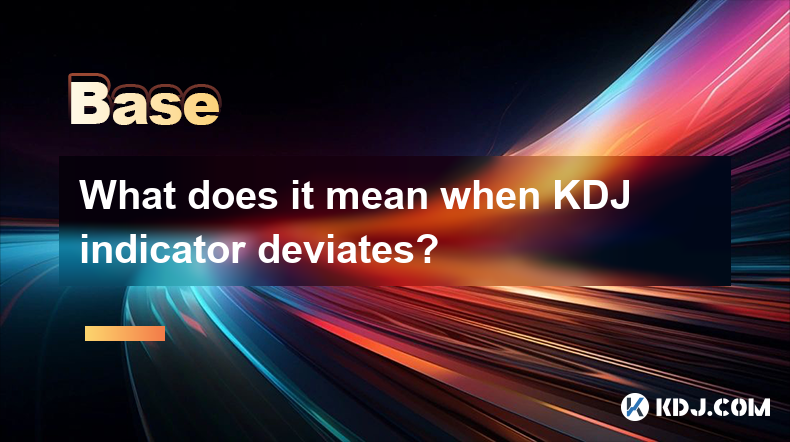
What does it mean when KDJ indicator deviates?
Apr 01,2025 at 03:08pm
The KDJ indicator, also known as the Stochastic Oscillator, is a popular technical analysis tool used in the cryptocurrency market to predict price movements. When the KDJ indicator deviates, it means that the current price of a cryptocurrency is moving away from its typical range, as indicated by the KDJ lines. This deviation can signal potential trend...
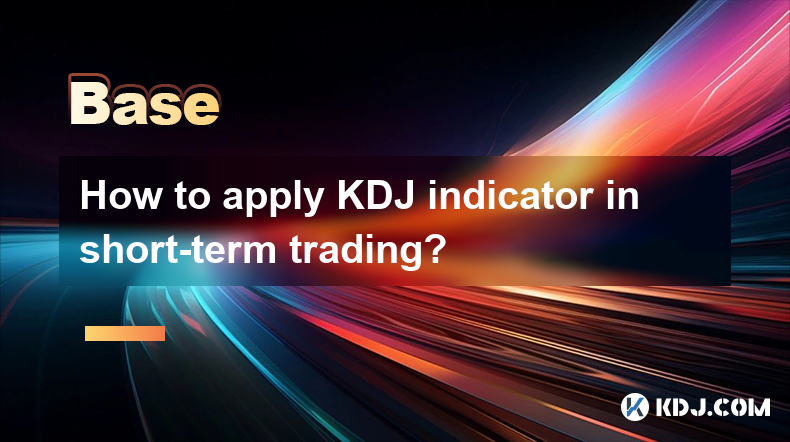
How to apply KDJ indicator in short-term trading?
Mar 31,2025 at 10:28pm
The KDJ indicator, also known as the Stochastic Oscillator, is a popular technical analysis tool used by traders to identify potential buy and sell signals in the cryptocurrency market. In short-term trading, the KDJ indicator can be particularly useful due to its sensitivity to price movements. This article will explore how to effectively apply the KDJ...
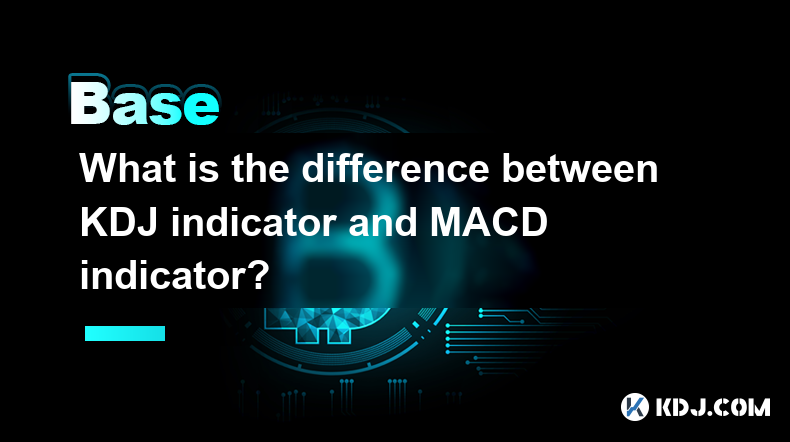
What is the difference between KDJ indicator and MACD indicator?
Apr 01,2025 at 08:21pm
The KDJ indicator and the MACD indicator are two popular technical analysis tools used by cryptocurrency traders to predict market trends and make informed trading decisions. While both indicators aim to help traders identify potential buy and sell signals, they differ in their construction, interpretation, and application. In this article, we will expl...
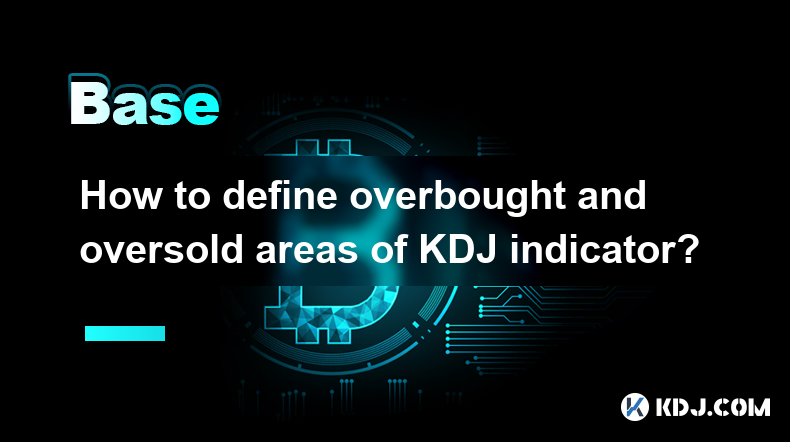
How to define overbought and oversold areas of KDJ indicator?
Apr 01,2025 at 06:42am
The KDJ indicator, also known as the Stochastic Oscillator, is a popular technical analysis tool used by traders to identify potential overbought and oversold conditions in the cryptocurrency market. Understanding how to define these areas can help traders make more informed decisions about when to buy or sell their assets. In this article, we will expl...
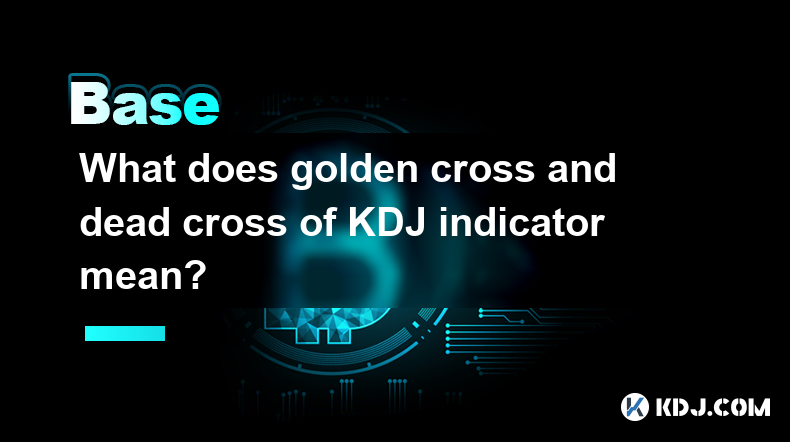
What does golden cross and dead cross of KDJ indicator mean?
Apr 02,2025 at 02:08am
The KDJ indicator, also known as the Stochastic Oscillator, is a popular technical analysis tool used by cryptocurrency traders to identify potential buy and sell signals. It consists of three lines: K, D, and J, which fluctuate between 0 and 100. The golden cross and dead cross of the KDJ indicator are important signals that traders look for to make in...

What kind of people does the currency term Maxi represent?
Mar 29,2025 at 08:49pm
Decoding the 'Maxi' in CryptocurrencyThe term 'Maxi' in the cryptocurrency world doesn't refer to a specific demographic or group with shared characteristics like age or profession. Instead, it's a label used to describe individuals holding a strong, often unwavering, belief in Bitcoin's dominance and superiority over all other cryptocurrencies. They a...

What does it mean when KDJ indicator deviates?
Apr 01,2025 at 03:08pm
The KDJ indicator, also known as the Stochastic Oscillator, is a popular technical analysis tool used in the cryptocurrency market to predict price movements. When the KDJ indicator deviates, it means that the current price of a cryptocurrency is moving away from its typical range, as indicated by the KDJ lines. This deviation can signal potential trend...

How to apply KDJ indicator in short-term trading?
Mar 31,2025 at 10:28pm
The KDJ indicator, also known as the Stochastic Oscillator, is a popular technical analysis tool used by traders to identify potential buy and sell signals in the cryptocurrency market. In short-term trading, the KDJ indicator can be particularly useful due to its sensitivity to price movements. This article will explore how to effectively apply the KDJ...

What is the difference between KDJ indicator and MACD indicator?
Apr 01,2025 at 08:21pm
The KDJ indicator and the MACD indicator are two popular technical analysis tools used by cryptocurrency traders to predict market trends and make informed trading decisions. While both indicators aim to help traders identify potential buy and sell signals, they differ in their construction, interpretation, and application. In this article, we will expl...

How to define overbought and oversold areas of KDJ indicator?
Apr 01,2025 at 06:42am
The KDJ indicator, also known as the Stochastic Oscillator, is a popular technical analysis tool used by traders to identify potential overbought and oversold conditions in the cryptocurrency market. Understanding how to define these areas can help traders make more informed decisions about when to buy or sell their assets. In this article, we will expl...

What does golden cross and dead cross of KDJ indicator mean?
Apr 02,2025 at 02:08am
The KDJ indicator, also known as the Stochastic Oscillator, is a popular technical analysis tool used by cryptocurrency traders to identify potential buy and sell signals. It consists of three lines: K, D, and J, which fluctuate between 0 and 100. The golden cross and dead cross of the KDJ indicator are important signals that traders look for to make in...

What kind of people does the currency term Maxi represent?
Mar 29,2025 at 08:49pm
Decoding the 'Maxi' in CryptocurrencyThe term 'Maxi' in the cryptocurrency world doesn't refer to a specific demographic or group with shared characteristics like age or profession. Instead, it's a label used to describe individuals holding a strong, often unwavering, belief in Bitcoin's dominance and superiority over all other cryptocurrencies. They a...
See all articles























































































